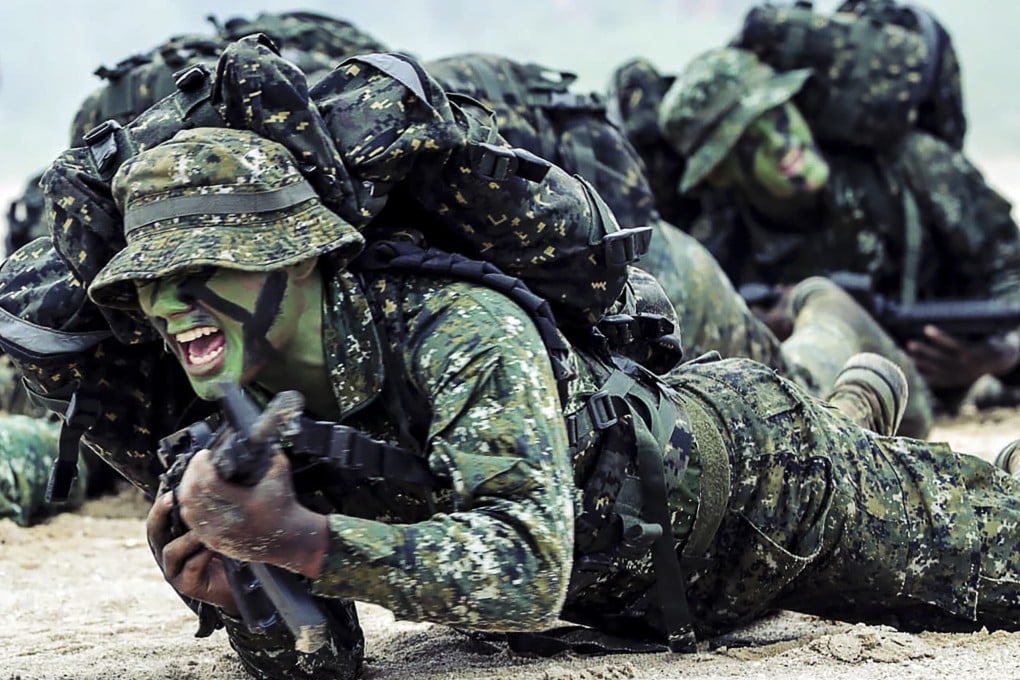Asian Angle | If Taiwan is on borrowed time, why do Taiwanese keep calm and carry on?
- As history rhymes, the island fantasy may have been doomed hundreds of years before Chiang Kai-shek’s Kuomintang came ashore
- Yet even if the bombs fell tomorrow, history books would record the first culturally Chinese democracy, writes William Han

In a 1991 show titled Strange Tales of Taiwan, the famed performer Lee Li-chun described Taiwan in the 1950s and 1960s. “In that era, everything was temporary,” he said. One “worked a temporary job in a temporary office. The names of the streets were temporary, so was the city plan. The government was temporary, the capital was temporary, and even the constitution was a ‘temporary provision’.”
I recalled this segment again in recent weeks as discussions grew of potential military conflict across the Taiwan Strait.
Something else that came to mind was the 1948 essay by the great American author E.B. White, Here Is New York. A love letter to that mesmerising metropolis, the essay turns elegiac toward the end. In the nuclear age, White noted, New York City was always only moments away from destruction:
“A single flight of planes no bigger than a wedge of geese can quickly end this island fantasy, burn the towers, crumble the bridges, turn the underground passages into lethal chambers, cremate the millions. The intimation of mortality is part of New York now: in the sound of jets overhead, in the black headlines of the latest edition.”
Many Americans turned to White’s essay after 9/11 to help them make sense of the terrorist attacks.

For months now, aircraft belonging to the People’s Liberation Army (PLA) have deliberately been making incursions into Taiwan’s air defence identification zone, with the apparent aims of intimidating the populace and taxing Taiwan’s air defences. A number of Western observers have lately taken to predicting war in the not-too-distant future, though just as many experts disagree.
The most headline-grabbing prophecy came from Admiral Philip Davidson, then head of the Indo-Pacific Command of the US armed forces. In March, he told the US Senate that, in view of Beijing’s ongoing military build-up, he expected it to take over Taiwan by 2027. His immediate successor, Admiral John Aquilino, concurred.

The most attention-grabbing headline appeared last month on the cover of The Economist magazine. Above a silhouette of Taiwan at the centre of a radar screen with US and PLA warplanes approaching from opposite sides, the headline read: “The most dangerous place on earth.”
The “Century of Humiliation” that began with the First Opium War (1839-42), during which loss of territory was common for China, has defined Beijing’s outlook. Any suggestion that Taiwan may not return to the fold is anathema to it. Indeed, Beijing has repeatedly named Taiwan as one of its “core interests” over which it would be willing to go to war, even against the US.
Most people in most corners of the world would reasonably feel a little discomfited upon seeing their homeland described this way, not to mention seeing hostile warplanes fly over it on a regular basis. But most corners of the world are not Taiwan, and most people are not Taiwanese. Ever since Chiang Kai-shek and his Kuomintang (KMT) regime escaped to Taiwan in 1949, the people here have lived under the gun. They are used to it.
It’s not as though the cross-strait stand-off remained merely a cold war during the Cold War. In October 1949, three weeks after Mao Zedong proclaimed the People’s Republic of China, nearly 10,000 PRC soldiers crossed the sea onto Quemoy, the island off the coast of Fujian province that is also known as Kinmen, to take on the KMT soldiers. The island’s defenders managed to fight them off. But had the battle gone the other way, there would have been no Taiwan as we know it today.
The following year, the island of Hainan, then still under KMT control, fell to the PLA.
In 1955, the PLA went after the Yijiangshan Islands off the coast of Zhejiang province. Storming the beaches, PLA forces killed or captured all of the island’s fighters. The Taiwan authorities, aided by the US Navy, evacuated other nearby islands.
Then in August 1958, a fierce artillery battle broke out, again over Quemoy, which had become Taiwan’s forward operating base. A great many service members on the island fortress lost their lives. In the same year, the two sides fought air and naval battles over the Taiwanese-controlled Matsu Islands. The US, which had previously cooled towards Chiang Kai-shek, only to reaffirm its support for Taiwan in the wake of the Korean war, now declared it was prepared to use nuclear weapons to prevent Taiwan’s conquest. Taiwan’s security guarantee by the US had its genesis then.
When the PLA decided to pull back from full-scale war, it began the practice of firing on Quemoy every other day, on the odd-numbered days of the month as a symbolic yet potent gesture that the civil war was not over, the threat of escalation ever-present. The periodic shelling would continue as simply a fact of life until 1979.
In 1992, the two sides reached the so-called “92 Consensus”, agreeing that there could only be “one China” without settling with specificity what that phrase meant. But by 1995-96, relations had deteriorated.
Lee Teng-hui had acceded to the presidency in Taiwan after Chiang Ching-kuo, Chiang Kai-shek’s son and successor, died in office in 1988. In 1995, during Lee’s first term, he visited Cornell University in the US in his private capacity as an alumnus of that institution. That the US permitted such a visit, the first by a sitting leader of Taiwan, caused great consternation in Beijing.
